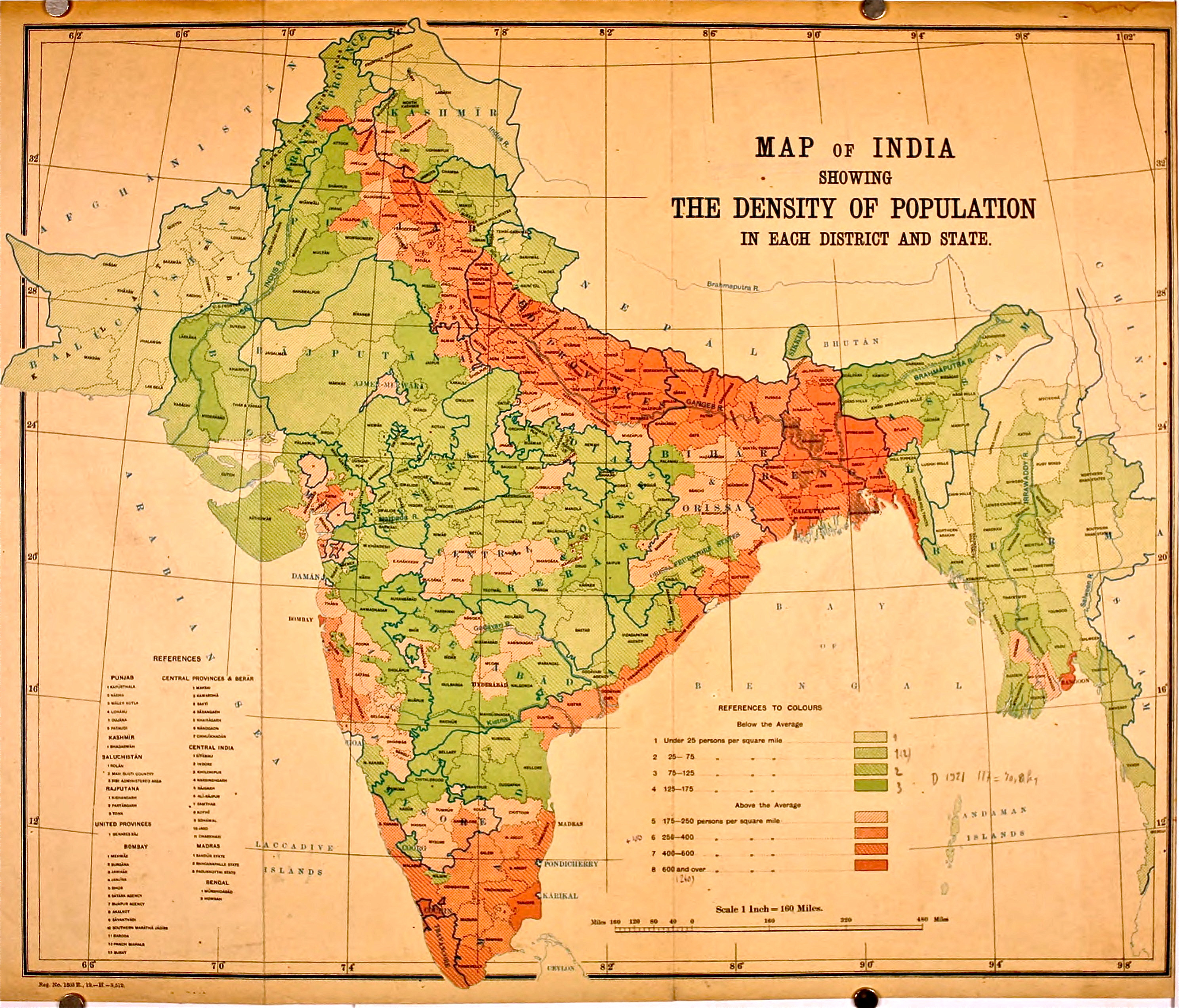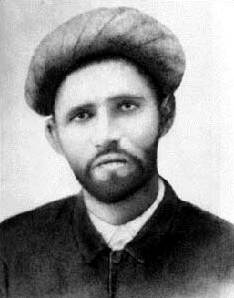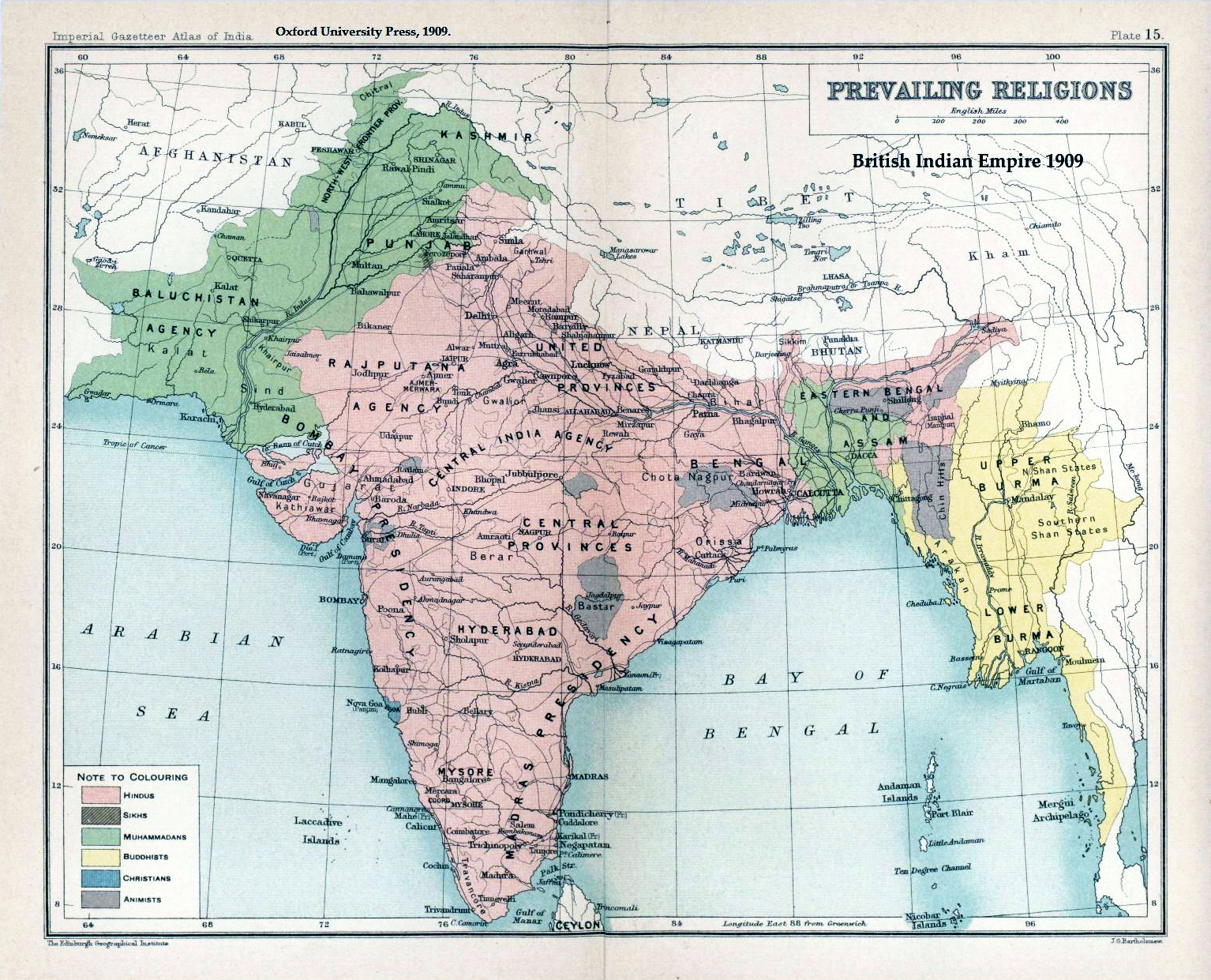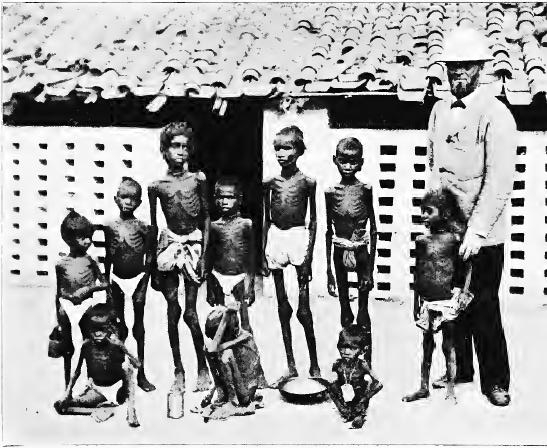|
Lahore Resolution
The Lahore Resolution ( ur, , ''Qarardad-e-Lahore''; Bengali: লাহোর প্রস্তাব, ''Lahor Prostab''), also called Pakistan resolution, was written and prepared by Muhammad Zafarullah Khan and was presented by A. K. Fazlul Huq, the Prime Minister of Bengal, was a formal political statement adopted by the All-India Muslim League on the occasion of its three-day general session in Lahore on 22–24 March 1940. It was unanimously passed on 23 March 1940. The resolution called for independent states as seen by the statement:That geographically contiguous units are demarcated regions which should be constituted, with such territorial readjustments as may be necessary that the areas in which the Muslims are numerically in a majority as in the North Western and Eastern Zones of (British) India should be grouped to constitute ‘independent states’ in which the constituent units should be autonomous and sovereign.Although the name "Pakistan" had been proposed by C ... [...More Info...] [...Related Items...] OR: [Wikipedia] [Google] [Baidu] |
All-India Muslim League
The All-India Muslim League (AIML) was a political party established in Dhaka in 1906 when a group of prominent Muslim politicians met the Viceroy of British India, Lord Minto, with the goal of securing Muslim interests on the Indian subcontinent. The party arose out of the need for the political representation of Muslims in British India, especially during the Indian National Congress-sponsored massive Hindu opposition to the 1905 partition of Bengal. During the 1906 annual meeting of the All India Muslim Education Conference held in Israt Manzil Palace, Dhaka, the Nawab of Dhaka, Khwaja Salimullah, forwarded a proposal to create a political party which would protect the interests of Muslims in British India. Sir Mian Muhammad Shafi, a prominent Muslim leader from Lahore, suggested the political party be named the 'All-India Muslim League'. The motion was unanimously passed by the conference, leading to the official formation of the All-India Muslim League in Dhaka. It r ... [...More Info...] [...Related Items...] OR: [Wikipedia] [Google] [Baidu] |
1937 Indian Provincial Elections
Provincial elections were held in British India in the winter of 1936-37 as mandated by the Government of India Act 1935. Elections were held in eleven provinces - Madras, Central Provinces, Bihar, Orissa, United Provinces, Bombay Presidency, Assam, NWFP, Bengal, Punjab and Sindh. The final results of the elections were declared in February 1937. The Indian National Congress emerged in power in eight of the provinces - the exceptions being Punjab and Sindh. The All-India Muslim League failed to form the government in any province. The Congress ministries resigned in October and November 1939, in protest against Viceroy Lord Linlithgow's action of declaring India to be a belligerent in the Second World War without consulting the Indian people. Electorate The Government of India Act 1935/ Legislative council 1935 increased the number of enfranchised people. Approximately 30 million people, among them some women, gained voting rights. This number constituted one-sixth of Indian ... [...More Info...] [...Related Items...] OR: [Wikipedia] [Google] [Baidu] |
British India
The provinces of India, earlier presidencies of British India and still earlier, presidency towns, were the administrative divisions of British governance on the Indian subcontinent. Collectively, they have been called British India. In one form or another, they existed between 1612 and 1947, conventionally divided into three historical periods: *Between 1612 and 1757 the East India Company set up factories (trading posts) in several locations, mostly in coastal India, with the consent of the Mughal emperors, Maratha Empire or local rulers. Its rivals were the merchant trading companies of Portugal, Denmark, the Netherlands, and France. By the mid-18th century, three ''presidency towns'': Madras, Bombay and Calcutta, had grown in size. *During the period of Company rule in India (1757–1858), the company gradually acquired sovereignty over large parts of India, now called "presidencies". However, it also increasingly came under British government oversight, in effect shar ... [...More Info...] [...Related Items...] OR: [Wikipedia] [Google] [Baidu] |
Composite Nationalism
Composite nationalism (Hindustani: ''mushtareka wataniyat'' or ''muttahidah qaumiyat'') is a concept that argues that the Indian nation is made of up people of diverse cultures, castes, communities, and faiths. The idea teaches that "nationalism cannot be defined by religion in India." While Indian citizens maintain their distinctive religious traditions, they are members of one united Indian nation. This principle opposes attempts to make Hindu nationalism, or any other religious chauvinism, a supposed requisite of Indian patriotism or nationalism. Composite nationalism maintains that prior to the arrival of the British into the subcontinent, no enmity between people of different religious faiths existed; and as such these artificial divisions can be overcome by Indian society. History Bipin Chandra Pal put forward the idea of composite patriotism in colonial India in 1906, promulgating the idea that "Hindus, Muslims, Christians, and other religious minorities (including ... [...More Info...] [...Related Items...] OR: [Wikipedia] [Google] [Baidu] |
Mohammed Ali Jinnah
Muhammad Ali Jinnah (, ; born Mahomedali Jinnahbhai; 25 December 1876 – 11 September 1948) was a barrister, politician, and the founder of Pakistan. Jinnah served as the leader of the All-India Muslim League from 1913 until the inception of Pakistan on 14 August 1947, and then as the Dominion of Pakistan's first governor-general until his death. Born at Wazir Mansion in Karachi, Jinnah was trained as a barrister at Lincoln's Inn in London. Upon his return to India, he enrolled at the Bombay High Court, and took an interest in national politics, which eventually replaced his legal practice. Jinnah rose to prominence in the Indian National Congress in the first two decades of the 20th century. In these early years of his political career, Jinnah advocated Hindu–Muslim unity, helping to shape the 1916 Lucknow Pact between the Congress and the All-India Muslim League, in which Jinnah had also become prominent. Jinnah became a key leader in the All-India Home Ru ... [...More Info...] [...Related Items...] OR: [Wikipedia] [Google] [Baidu] |
AK Fazlul Haque
AK Fazlul Haque is a politician of Satkhira District and organizer of the Bangladesh Liberation war who was the Member of Parliament of Satkhira-5 constituency at that time. Early life Haque was born in the Satkhira district. His son SM Ataul Haque Dolan is the general secretary of the Shyamnagar Upazila Awami League In Urdu language, Awami is the adjectival form for ''Awam Awam ( ur, ) is the Urdu language word for common people or general public. In the early 20th century, the word was extensively used in the Indian subcontinent to refer to the general po .... Career Haque was the organizer of the Bangladesh Liberation war and vice president of Satkhira District unit of Awami League. He was elected a Member of the Provincial Assembly in 1970 and a Member of the Constituent Assembly in 1982 as an Awami League candidate. He was elected as a Member of Parliament from the then Satkhira-5 constituency as a candidate of Awami League in the 7th Parliamentary Election of 12 ... [...More Info...] [...Related Items...] OR: [Wikipedia] [Google] [Baidu] |
Karachi
Karachi (; ur, ; ; ) is the most populous city in Pakistan and 12th most populous city in the world, with a population of over 20 million. It is situated at the southern tip of the country along the Arabian Sea coast. It is the former capital of Pakistan and capital of the province of Sindh. Ranked as a beta-global city, it is Pakistan's premier industrial and financial centre, with an estimated GDP of over $200 billion ( PPP) . Karachi paid $9billion (25% of whole country) as tax during fiscal year July 2021 to May 2022 according to FBR report. Karachi is Pakistan's most cosmopolitan city, linguistically, ethnically, and religiously diverse, as well as one of Pakistan's most secular and socially liberal cities. Karachi serves as a transport hub, and contains Pakistan’s two largest seaports, the Port of Karachi and Port Qasim, as well as Pakistan's busiest airport, Jinnah International Airport. Karachi is also a media center, home to news channels, film and f ... [...More Info...] [...Related Items...] OR: [Wikipedia] [Google] [Baidu] |
Two Nation Theory
The two-nation theory is an ideology of religious nationalism that influenced the decolonisation of the British Raj in South Asia. According to this ideology, Indian Muslims and Indian Hindus are two separate nations, with their own customs, religion, and traditions; consequently, both socially and morally, Muslims should have a separate homeland within the decolonised British Indian Empire. Syed Ahmad Khan, the pioneer of Muslim nationalism in South Asia is widely credited as the father of the Two-Nation Theory. The theory that religion is the determining factor in defining the nationality of Indian Muslims was promoted by Muhammad Ali Jinnah and became the basis of Pakistan Movement. The Two-Nation theory argued for a different state for the Muslims of the British Indian Empire as Muslims would not be able to succeed politically in a Hindu-majority India; this interpretation nevertheless promised a democratic state where Muslims and non-Muslims would be treated equally. ... [...More Info...] [...Related Items...] OR: [Wikipedia] [Google] [Baidu] |
Nai Talim
Nai Talim, or Basic Education, is a principle which states that knowledge and work are not separate. Mahatma Gandhi promoted an educational curriculum with the same name based on this pedagogical principle. It can be translated with the phrase 'Basic Education for all'. However, the concept has several layers of meaning. It developed out of Gandhi's experience with the English educational system and with colonialism in general. In that system, he saw that Indian children would be alienated and 'career-based thinking' would become dominant. In addition, it embodied a series of negative outcomes: the disdain for manual work, the development of a new elite class, and the increasing problems of industrialization and urbanization. The three pillars of Gandhi's pedagogy were its focus on the ''lifelong character'' of education, its ''social character'' and its form as a ''holistic process''. For Gandhi, education is 'the moral development of the person', a process that is by definit ... [...More Info...] [...Related Items...] OR: [Wikipedia] [Google] [Baidu] |
Central Provinces
The Central Provinces was a province of British India. It comprised British conquests from the Mughals and Marathas in central India, and covered parts of present-day Madhya Pradesh, Chhattisgarh and Maharashtra states. Its capital was Nagpur. Its Summer Capital was Pachmarhi. It became the Central Provinces and Berar in 1903. The Central Provinces was formed in 1861 by the merger of the Saugor and Nerbudda Territories and Nagpur Province. The district of Nimar which was administered by the Central India Agency was added in 1864. It was almost an island encircled by a sea of "native States" such as Bhopal State and Rewa State to the north, the Chota Nagpur States and Kalahandi State to the east, and the Nizam's territories of Hyderabad to the south and Berar to the west. Geography The Central Provinces was landlocked, occupying the mountain ranges, plateaus, and river valleys in the centre of the Indian Subcontinent. The northernmost portion of the state extended on ... [...More Info...] [...Related Items...] OR: [Wikipedia] [Google] [Baidu] |
Vande Mataram
''Vande Mataram'' (Sanskrit: वन्दे मातरम् IAST: , also spelt ''Bande Mataram''; বন্দে মাতরম্, ''Bônde Mātôrôm''; ) is a poem written in sanskritised Bengali by Bankim Chandra Chatterjee in the 1870s. The first two verses of the poem were adopted as the National Song of India in October 1937 by the Congress. The poem was first published in 1882 as part of Chatterjee's Bengali novel ''Anandmath''. It is an ode to the motherland, personified as the "mother goddess" is later verses, of the people. This initially referred to Bengal, with the "mother" figure therefore being Banga Mata (Mother Bengal), though the text does not mention this explicitly. Indian nationalist and philosopher Sri Aurobindo referred ''Vande Mataram'' as the "national Anthem of Bengal". Nonetheless, the poem played a vital role in the Indian independence movement. It first gained political significance when it was recited by Rabindranath Tagore at Congress ... [...More Info...] [...Related Items...] OR: [Wikipedia] [Google] [Baidu] |
Flag Of India
The national flag of India, colloquially called the tricolour, is a horizontal rectangular tricolour flag of India saffron, white and India green; with the ', a 24-spoke wheel, in navy blue at its centre. It was adopted in its present form during a meeting of the Constituent Assembly held on 22 July 1947, and it became the official flag of the Dominion of India on 15 August 1947. The flag was subsequently retained as that of the Republic of India. In India, the term "tricolour" almost always refers to the Indian national flag. The flag is based on the ' flag, a flag of the Indian National Congress designed by Pingali Venkayya. By law, the flag is to be made of ', a special type of hand-spun cloth or silk, made popular by Mahatma Gandhi. The manufacturing process and specifications for the flag are laid out by the Bureau of Indian Standards. The right to manufacture the flag is held by the Khadi Development and Village Industries Commission, who allocates it to regional groups ... [...More Info...] [...Related Items...] OR: [Wikipedia] [Google] [Baidu] |








